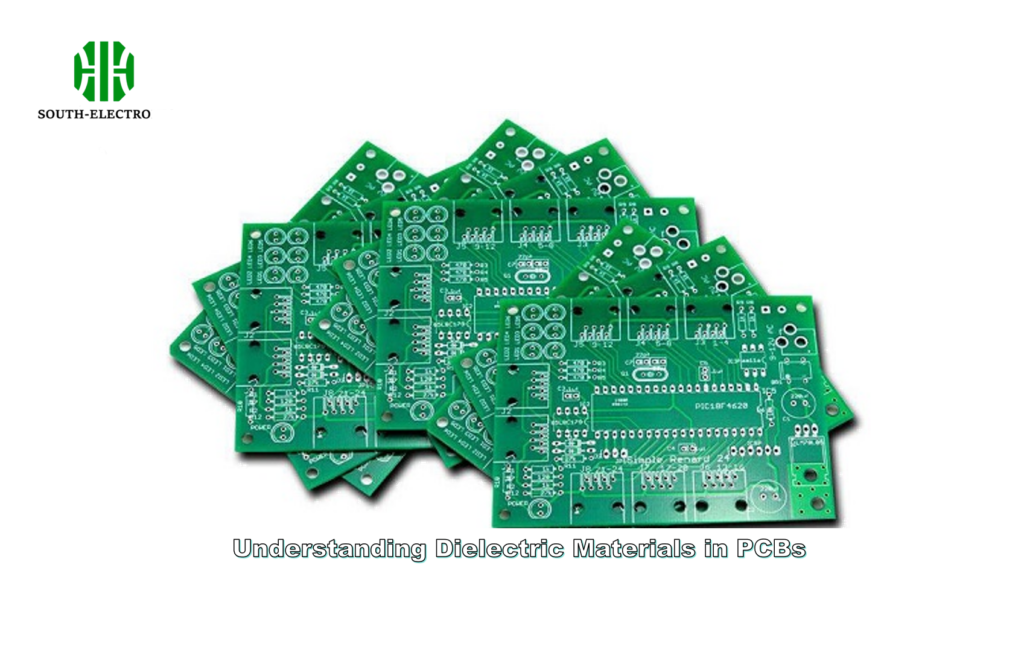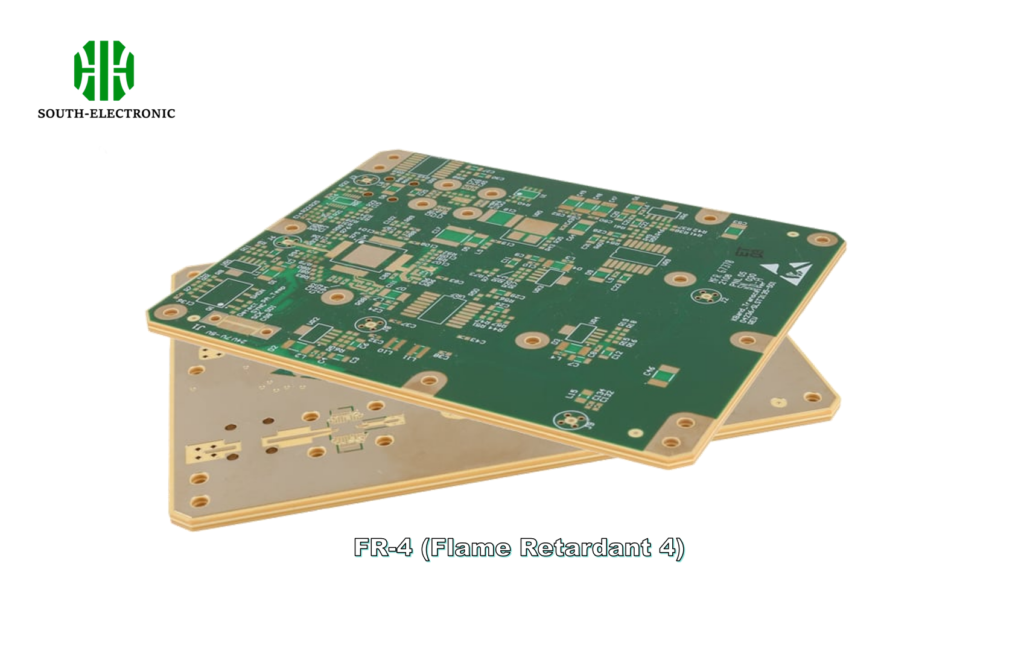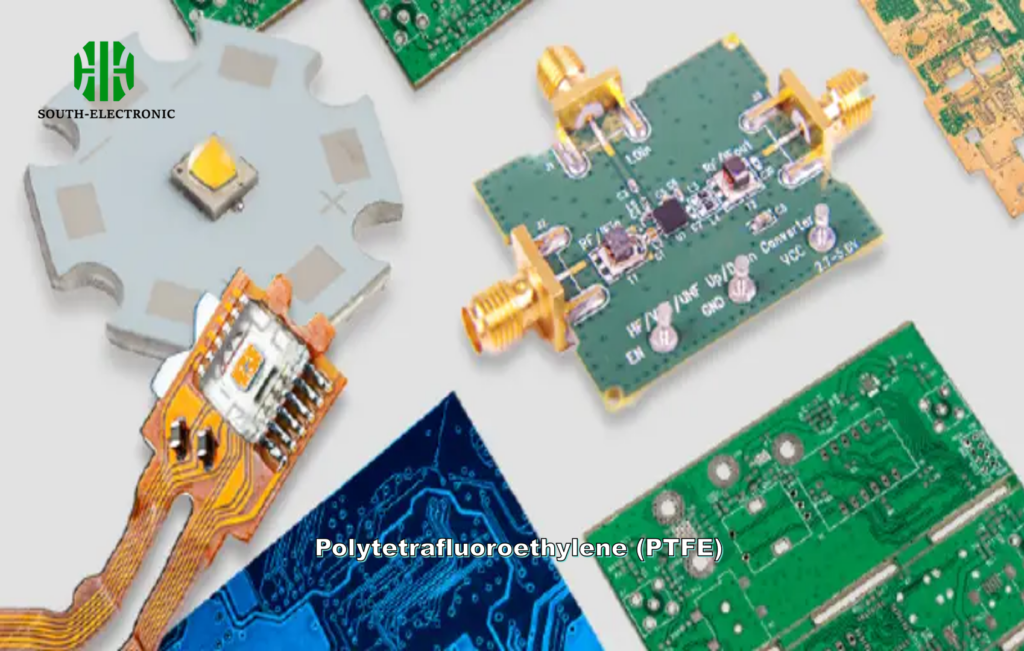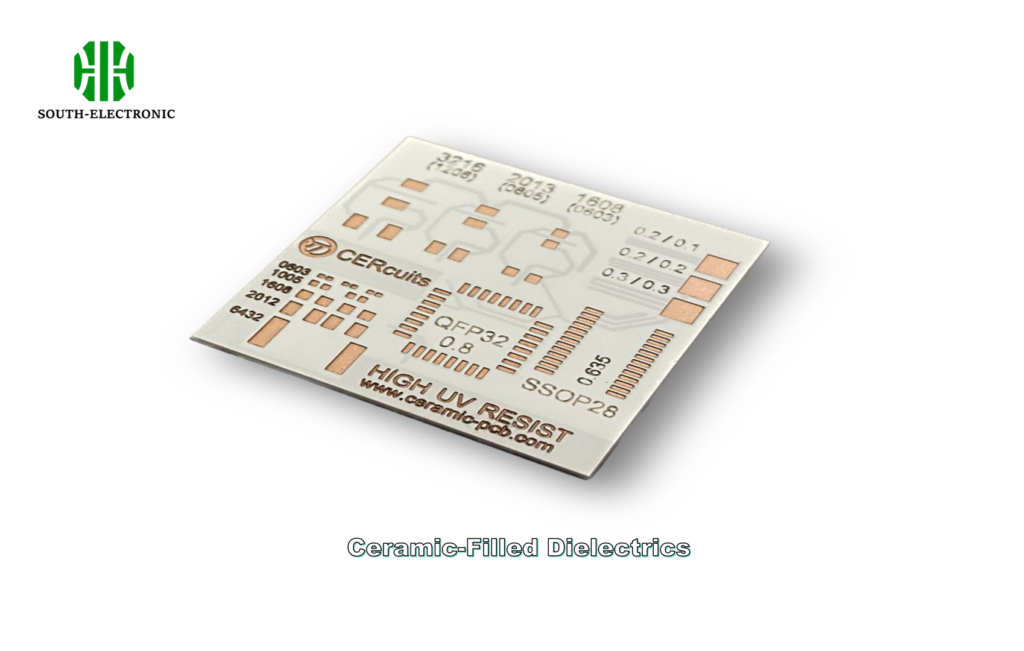Understanding Dielectric Materials in PCBs
In simple terms, dielectric materials in PCBs serve as insulators. Dielectric materials are essential to the performance, reliability, and durability of PCBs. From the widely used FR-4 to the high-frequency PTFE and flexible polyimide, each material offers distinct properties suited for specific applications.
Role of Dielectric Materials in PCB Construction
Dielectric materials act as the non-conductive layers between copper traces. They:
- Maintain electrical insulation.
- Provide mechanical strength.
- Manage thermal dissipation.
- Affect signal transmission properties.

Common Types of Dielectric Materials Used in PCBs
There are several dielectric materials available for PCBs, each with unique electrical, mechanical, and thermal properties. Below are the most common types:
FR-4 (Flame Retardant 4)
FR-4 is one of the most commonly used dielectric materials in PCBs. It is a woven glass fabric reinforced with epoxy resin, making it both cost-effective and suitable for a wide range of applications.
Key Properties of FR-4:
- Dielectric constant (Dk): Typically around 4.5.
- Thermal conductivity: Moderate.
- Applications: Standard consumer electronics, low to medium-frequency applications.

Polytetrafluoroethylene (PTFE)
PTFE, commonly known by its brand name Teflon, is used in high-performance PCBs, especially in applications requiring high-frequency transmission. It has excellent dielectric properties and remains stable at very high frequencies.
Key Properties of PTFE:
- Dielectric constant (Dk): As low as 2.1.
- Thermal properties: Excellent, suitable for RF and microwave circuits.
- Applications: RF and microwave circuits, high-speed digital circuits.

Comparison of FR-4 and PTFE Properties
| Property | FR-4 | PTFE |
|---|---|---|
| Dielectric Constant | ~4.5 | 2.1 |
| Loss Tangent | 0.02 | 0.001 |
| Thermal Conductivity | Moderate | High |
| Typical Applications | Consumer electronics | High-frequency circuits |
Polyimide
Polyimide is known for its flexibility and thermal resistance, making it ideal for flexible PCBs and those used in high-temperature environments. It is commonly used in aerospace and military applications.
Key Properties of Polyimide:
- Dielectric constant (Dk): Around 3.5.
- Thermal resistance: High, capable of withstanding extreme temperatures.
- Applications: Flexible circuits, aerospace, and military-grade PCBs.
Specialized Dielectric Materials for High-Performance Applications
Some applications require specialized dielectric materials to handle unique environmental or signal integrity requirements.
Ceramic-Filled Dielectrics
Ceramic-filled dielectric materials provide superior thermal management and are often used in high-power applications. These materials offer high dielectric strength and stability across a wide range of frequencies.
Key Properties of Ceramic-Filled Dielectrics:
- Dielectric constant (Dk): Can range from 6 to 10.
- Thermal conductivity: High, making it ideal for heat dissipation.
- Applications: High-power circuits, high-frequency applications.

CEM-1 and CEM-3
CEM (Composite Epoxy Materials) are often used as an alternative to FR-4 in applications where cost-saving is important. CEM-1 and CEM-3 offer lower thermal conductivity and slightly different mechanical properties but are still suitable for low-cost, low-power applications.
Comparison of FR-4, Ceramic-Filled, and CEM-3 Properties
| Property | FR-4 | Ceramic-Filled | CEM-3 |
|---|---|---|---|
| Dielectric Constant | ~4.5 | 6–10 | ~5 |
| Thermal Conductivity | Moderate | High | Low |
| Typical Applications | Consumer electronics | High-power, RF | Low-power applications |
Selecting the Right Dielectric Material for Your PCB
The choice of dielectric material depends on several factors, including the operating frequency, thermal requirements, mechanical stress, and cost constraints.
- Frequency and Signal Integrity:For high-frequency PCBs (such as RF and microwave circuits), materials like PTFE and ceramic-filled dielectrics are ideal. They minimize signal loss and maintain integrity at high frequencies.
- Thermal Requirements:Applications that generate significant heat, such as power electronics, benefit from materials with high thermal conductivity. Ceramic-filled dielectrics are an excellent choice for managing heat dissipation in such cases.
- Flexibility Needs:In applications requiring flexible circuits, such as wearable technology or aerospace systems, polyimide stands out due to its flexibility and thermal resistance.
In short, dielectric materials are super important for how well your PCB works and how long it lasts. From the most popular FR-4 to the high-frequency PTFE and flexible polyimide, each material has different stuff it's good for. Knowing this stuff will help you make your PCBs work better, handle power better, and just plain work better.



